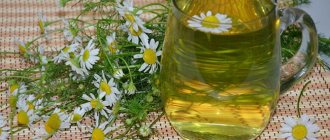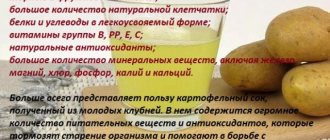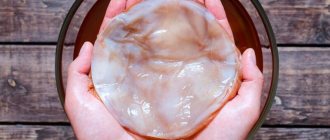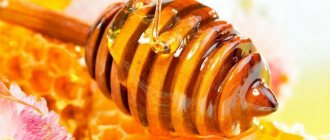Chamomile is one of the most famous and popular medicinal plants. It has a huge number of useful properties, pleasant taste and aroma. It is used not only as a medicine or prophylactic, but also simply as an additive to tea. We are so accustomed to chamomile that we don’t even think about its possible contraindications and side effects. And only expectant mothers sometimes wonder whether chamomile tea can be consumed during pregnancy and whether it will harm the unborn baby.
How you can and cannot use chamomile during pregnancy
Chamomile can be used during pregnancy in any form for external use. In particular, pregnant women can:
- Apply chamomile preparations to the skin, various scratches, irritations, wounds, rashes;
- Treat mucous membranes with chamomile preparations, for example, blot your eyes with them, wash them;
- Gargle and gargle;
- Rinse your nose with a decoction or infusion of chamomile;
- Do enemas and microenemas with chamomile;
- Apply masks with chamomile to your face, apply lotions, wipe your face with tampons soaked in chamomile preparation, steam your face over a hot bath with chamomile;
- Take baths with chamomile added to the water, do sitz baths;
- Wash your hair with products containing chamomile infusion, and generally use it for hygiene purposes, including intimate hygiene.
Various lotions, creams and shampoos containing chamomile are completely permitted during pregnancy.
With all these procedures, the active components of chamomile act locally only on those tissues that are treated with the drug. In these cases, chamomile does not have a systemic effect on the body and does not lead to those side effects due to which its use may be contraindicated.
Taking chamomile preparations orally is contraindicated during pregnancy—you can’t drink any decoction, tea, or infusion. In this case, chamomile components not only act on the digestive tract, but also enter the bloodstream, reach other organs and can cause side effects that are dangerous for pregnancy.
Simply put, you should not drink chamomile products during pregnancy. Almost all other procedures are acceptable with them.
Important!
Chamomile preparations are dangerous only if they enter the upper parts of the digestive tract - the stomach, small and middle intestines. This is where the most active absorption of the components of any product occurs with their penetration into the bloodstream. Absorption practically does not occur in the large intestine, and therefore enemas with chamomile are, in principle, not contraindicated for pregnant women.
There is no consensus on whether chamomile inhalations can be done during pregnancy. On the one hand, the components of the drug can enter the bloodstream from the lungs as well as from the stomach. On the other hand, there are no known pregnancy-specific side effects following such inhalations.
However, there is this specificity: with chamomile you can only do steam inhalations, either over a saucepan or over a steam inhaler. Inhalations with a nebulizer, ultrasonic inhaler, compressor inhaler with the addition of natural plant materials are prohibited by the instructions for use of these devices. With steam inhalations, the steam itself does not penetrate deeper than the trachea and cannot be absorbed into the blood. Therefore, in general, during pregnancy you can breathe over chamomile.
Another stumbling block is douching with chamomile. Many pregnant women perform them for the treatment of thrush, vaginitis, colpitis and other gynecological diseases. On the one hand, chamomile itself is not dangerous during such procedures, since it does not have a systemic effect on the body. But on the other hand, douching itself is dangerous.
It doesn’t matter what douching is done with - chamomile or another remedy. They are dangerous in themselves, as procedures.
Special studies have shown that pregnant women who practice such douching at least several times during the entire gestation period increase the risk of having an underweight child (less than 2.5 kg), premature birth in general (when performing procedures in late pregnancy) and miscarriage, if douching is performed at the beginning of gestation. Therefore, such procedures during pregnancy are also contraindicated, regardless of whether they are carried out with chamomile or any other remedy.
How to brew chamomile tea during pregnancy correctly
- The whole secret of preparing the drink is that the dry grass is poured with hot water with a temperature of no higher than 95 degrees, the teapot is tightly closed so that it does not cool down and left to infuse for ten minutes;
- This time is enough to get a pleasant aromatic drink with a wonderful refreshing smell;
- Afterwards, filter the contents and drink no more than a glass a day. The infusion should not be made saturated; adding 1 tsp will be enough. herbs per 0.5 liters of hot water.
To make taking the infusion more effective, you should divide the daily dose into two or three servings and drink half an hour before meals.
If there are no allergies or other contraindications from the digestive tract, add lemon or lime to your tea, or better yet, take the infusion as a bite with honey. Half a teaspoon will be enough (read the current article on the topic: Honey during pregnancy).
It is tempting, of course, to collect medicinal herbs yourself, but given the ecology of our industrial areas, it is better to purchase chamomile at the pharmacy. For ease of use, it is packaged in tea bags.
Can chamomile tea be used during early pregnancy?
You should not abuse medicinal tea at the beginning of pregnancy. It is believed that chamomile can influence the production of female sex hormones - estrogens.
Their excess at the beginning of pregnancy can lead to excessive irritability, agitation, and even aggressiveness. Agree that these are not the best emotions for an expectant mother.
Important! Do not forget that antiseptics should not be used constantly during the “interesting” period. We don’t take even good medicine all the time.
Chamomile is not a vitamin. With moderate and proper consumption, it will benefit the body at all stages of pregnancy.
Treating a sore throat with chamomile infusion
Since we are not going to take the infusion internally, it is important to make it more intense.
- To do this, pour one tablespoon of dry chamomile into a glass of hot water, heat it to a boil, and leave to infuse for half an hour, wrapping the jar on top with something warm;
- Afterwards the infusion is filtered and the medicine is ready;
- You should gargle with the infusion 1-3 times a day. You can alternate with an infusion of sea salt to avoid excessive drying of the throat mucosa.
Headache
Headaches can be caused not only by overexertion, but also by temperature.
We prepare tea according to the classic recipe and take no more than one glass per day.
Cough
Remember how your mother sat you under a blanket, forcing you to breathe over a hot broth. Also breathe in the chamomile infusion to help relieve mucus. It is important to carry out the procedure in the evening so that you do not have to go outside after it.
Important! After the procedure, it is better to immediately lie down under a warm blanket and warm up thoroughly.
What can happen if a pregnant woman takes chamomile orally?
The main danger associated with taking chamomile orally during pregnancy is stimulation of the muscles of the uterus, due to which a miscarriage can occur in the early stages of pregnancy, and in the later stages (starting from the 25th week) - premature birth with the birth of a premature baby.
If you have any unpleasant sensations in the lower abdomen, especially if you have diagnosed uterine tone, you should not drink chamomile.
The risk of such outcomes is small and occurs mainly in women with one or another predisposition. Thus, taking chamomile orally is definitely contraindicated in pregnant women who exhibit the following symptoms:
- Pain in the lower abdomen;
- Various discharges, including those with an unpleasant odor;
- Stinging, itching in the groin area.
All these symptoms indicate the presence of certain pathologies in which chamomile can be dangerous.
Moreover, chamomile preparations should not be taken orally by women undergoing convalescent care, for whom the risk of premature birth and fetal loss is especially high.
Even in the absence of such symptoms, it is impossible to talk about the safety of drinking chamomile preparations. As a smooth muscle tonic, chamomile can provoke unwanted uterine activity even in a completely healthy woman with a normal pregnancy.
Also, chamomile in pregnant women can lead to other undesirable effects:
- Diarrhea, more often - with a corresponding predisposition or with already developed diarrhea;
- Allergies.
It is also useful to read: Can pregnant women gargle with chamomile?
Such consequences rarely occur, and if they develop, but the pregnant woman quickly stops taking the drug, then serious conditions are not observed. However, if a woman already has allergies or diarrhea, she should not take chamomile. In case of allergies, this is also true for external use.
On a note
In reviews, many pregnant women report that with the help of chamomile they even treat allergies caused by other allergens. This, however, is a dangerous approach: chamomile can both relieve allergy symptoms and intensify them, since it itself contains a large amount of biologically active substances that can act as an allergen. Therefore, messages on various forums with recommendations to drink chamomile to relieve allergies should be approached with caution, so as not to become one of the isolated cases in which an allergy to chamomile led to a fatal condition.
On the other hand, there are numerous cases where doctors themselves prescribe chamomile to pregnant women, and after taking it no undesirable consequences arose. Such situations must be interpreted unambiguously: there is always a risk, but not always and not for every woman it is realized. If it is present, in order to avoid accidents, it is better to play it safe and not take chamomile. Moreover, as we will see later, there is no urgent need for pregnant women to take chamomile.
In any case, you should not take chamomile during pregnancy on your own. Responsibility for the consequences of its use must be borne by the doctor who prescribes its use, and only if he authorizes its use can it be drunk, observing the precautionary rules.
Flower Therapy Recipes
Chamomile will help cope with an incipient cold and relieve cough. The healing herb will help normalize the gastrointestinal tract. It will relieve oral pathologies and eliminate many gynecological problems. Of course, if it is applied correctly.
Tea for immunity
Description. The drink will help raise your tone and strengthen the immune system. Reviews show that chamomile tea effectively protects the body from colds during the epidemic season.
Compound:
- chamomile flowers - two teaspoons;
- water - one glass.
What to do
- Dried flowers are brewed with boiling water.
- Cover the cup with chamomile with a saucer and leave for three hours. You can infuse the drink in a thermos.
- Then it is filtered.
- It is recommended to drink a quarter glass three times a day.
- Therapy is continued for two to three weeks. You can resume the course after a two-week break.
A decoction for inflammation in the throat and mouth
Description. Chamomile decoction during pregnancy is recommended for cleansing the mouth and throat from infections. This remedy will help with sore throat, cure stomatitis, eliminate sore throat, and help cope with laryngitis.
Compound:
- chamomile inflorescences - five tablespoons;
- water - half a liter.
What to do
- The inflorescences are filled with purified water.
- The mixture is boiled over low heat for five minutes.
- Then close the container with a lid and leave for about 15 minutes.
- The broth is filtered and allowed to cool slightly.
- Gargling or gargling is done after eating. Repeat the event three to five times a day until the unpleasant symptoms completely disappear.
Composition for inhalation for cough and runny nose
Description. If a cold is accompanied by a runny nose and cough, then inhalations are used. For this procedure, you can only use chamomile. But herbalists recommend using it as part of other herbs. This way the therapeutic effect is enhanced several times. Not all herbs recommended in the recipe can be used. Inhalation will not lose its healing power if you exclude the ingredient that could not be found. It is best to use a nebulizer or a special inhaler. If you don’t have such a device, you can brew the herbs in a saucepan.
Composition for the treatment of wet cough:
- chamomile flowers - half a teaspoon;
- string - half a teaspoon;
- wild rosemary - half a teaspoon;
- yarrow - half a teaspoon;
- eucalyptus - half a teaspoon;
- water - two liters.
Composition for the treatment of dry cough:
- chamomile - half a teaspoon;
- linden color - half a teaspoon;
- plantain - half a teaspoon;
- thyme - half a teaspoon;
- sage - half a teaspoon;
- water - two liters.
What to do
- Boil the herbs in a saucepan over low heat for five minutes.
- Be sure to give the broth time to cool slightly so as not to cause a burn to the respiratory tract and larynx.
- If inhalation is carried out only for cough, then breathe through the mouth. If you also have a runny nose, periodically breathe either through your mouth or through your nose.
- The duration of the event is ten minutes.
Thermal procedures can be carried out only in the absence of elevated temperature. If the thermometer reaches 37.5°C, inhalations should be abandoned.
Means for cleansing the nose and maxillary cavities
Description. Chamomile is useful during pregnancy for colds. If you prepare a concentrated decoction, you can use it as an effective means for nasal instillation or rinsing the maxillary sinuses.
Compound:
- chamomile - four tablespoons;
- water - 250 ml.
What to do
- Flowers are filled with water. Cook the broth over low heat for five minutes.
- Infuse it in a closed container for ten minutes. Then filter.
- To eliminate a runny nose, three drops of the resulting concentrated decoction are instilled into each nostril. Repeat up to five times a day.
- If you suffer from sinusitis, then the decoction is used to rinse the sinuses. But such an event is permissible only if nasal breathing is at least partially preserved.
This decoction is used exclusively for local therapy. It is strictly forbidden to consume it internally. Chamomile decoction is not recommended for use if a pregnant woman has an allergic or vasomotor runny nose. In this case, the medicinal herb will only worsen the patient’s condition.
Therapeutic baths for gynecological problems
If inflammatory pathologies “feminine-style” are detected during pregnancy, then medicinal baths are prescribed. Sometimes the question arises whether douching is acceptable for expectant mothers. Gynecologists claim that such an event cannot harm the baby, but this procedure should not be abused. And it is absolutely not recommended to resort to douching without a doctor’s prescription. It is useful to use chamomile decoction for daily washing. It will provide an antiseptic effect, protect against infection and ensure freshness throughout the day.
For washing, it is recommended to use a regular warm chamomile decoction. This procedure is repeated twice a day. And to get rid of thrush, baths are recommended. To do this, pour concentrated chamomile decoction into a bowl of warm water. They sit in it for 15-20 minutes. The event is carried out exclusively according to the schedule prescribed by the doctor. In severe cases, your doctor may recommend douching.
The water temperature should not exceed 38 °C, since a hot bath is very dangerous for the expectant mother. It can cause miscarriage or premature birth.
When applied topically, chamomile is not capable of causing any negative reactions. The only exception is individual intolerance, which a pregnant woman probably knows about. But when taking the drug orally, you should always remember about the presence of contraindications and possible negative effects. Therefore, before drinking chamomile during pregnancy, you should definitely consult a gynecologist.
At what stages of pregnancy is taking chamomile most dangerous?
Chamomile is most dangerous during pregnancy when the risk of fetal loss is highest due to increased uterine activity.
The highest risk from taking chamomile orally appears in the first trimester of pregnancy up to 15-16 weeks, but especially in the first weeks, when a miscarriage can be mistaken by a pregnant woman for too heavy and intense periods.
During this period, the longer the pregnancy, the lower the risk of undesirable consequences.
The most critical period is the first weeks, when the embryo has not been reliably fixed in the uterus.
Chamomile is least dangerous in the second trimester, when the fetus is already of significant size, and uterine hypertonicity is least likely to lead to both miscarriage and premature birth. And yet, the risk remains even at this time.
The danger of taking chamomile in the third trimester of pregnancy is about as great as in the first. However, after 27-30 weeks, even premature birth, no matter how unwanted, gives the baby a chance to survive. However, this should not be relied upon and chamomile should be avoided at all costs.
On a note
In the 3rd trimester, the longer the period, the more dangerous it is to take chamomile, since the more developed the fetus, the more likely the onset of labor is when the muscles of the uterus are stimulated. At 40 weeks, taking chamomile will almost certainly stimulate labor.
Therapeutic effects that can be achieved with chamomile
As a rule, during pregnancy, chamomile is used for the same purposes as in any other period. With its help they try to treat diseases or eliminate symptoms such as:
- Abdominal pain - the effectiveness of chamomile in such cases has been experimentally proven;
- Bloating after eating, flatulence;
- Headache - chamomile is known as a sedative and relaxant;
- Heartburn - in this case there is no certainty that chamomile will work, since its effectiveness against heartburn has not been confirmed;
- Nausea is an extremely ambiguous indication, since chamomile preparations themselves can provoke nausea or vomiting if the drug is sufficiently concentrated. It is highly likely that you will not be able to get rid of nausea and symptoms of toxicosis in pregnant women using chamomile;
- Insomnia, anxiety, neuroses - due to the same calming effect;
- Unpleasant sensations in the genital area - itching, pain, pain. If in these cases chamomile is used externally, for baths or washing intimate places, it will be safe. If they try to drink it to get rid of such sensations, its danger may be greater than its therapeutic effect;
- Irritation, rashes, inflammation on the skin or mucous membranes (for example, stye on the eye) - in these cases, the external use of chamomile will really be useful and will reduce the severity of symptoms;
- Cystitis, in which they try to take chamomile both internally and in the form of douching. Both its use is contraindicated for pregnant women. Similarly, the practice of sitting in a chamomile decoction (so-called “sitz baths”) has no evidence of effectiveness;
- Relieving inflammation of the respiratory tract - nasal passages, throat, bronchi. When using nasal rinses or steam inhalations, this technique is useful; when inhaling using nebulizers and ultrasonic inhalers, it is prohibited.
Medicines prepared from sachets are more convenient than those prepared from loose raw materials, since I do not leave debris in the container with the medicine.
There are many other purposes for which chamomile is tried, but for which its effectiveness is either unconfirmed and chamomile preparations are most likely either completely useless or act only due to the placebo effect.
For example, with chamomile, pregnant women often try to reduce the temperature during ARVI and bacterial infections, provoke a diuretic effect and get rid of edema, get rid of the already mentioned heartburn and nausea, and obtain a choleretic effect. Chamomile's ability to help in these cases is not known.
The most important thing: not a single therapeutic effect from the use of medicinal chamomile, even if clearly confirmed, allows its use to eliminate the cause of the disease, and therefore, to completely cure a pregnant woman. This means that in fact, with the help of chamomile, you can only slightly reduce the manifestations of a particular disease. Whether this effect is worth risking the well-being of the pregnancy and fetus is an open question.
Rules for preparing chamomile preparations
Chamomile can successfully fight a large list of diseases of the expectant mother, as well as during breastfeeding and for a newborn baby. Here is a partial list:
- Great for calming the nerves.
- Relieves headaches.
- Helps with stomach problems (pain, cramps, bloating, constipation).
- Has an anti-inflammatory, healing effect.
- Helps fight oral diseases.
- Used for douching the genitals.
- Helps with joint inflammation.
- Helps with toxicosis in pregnant women.
Chamomile infusions help relieve attacks of toxicosis.
For toxicosis in pregnant women, chamomile is an indispensable assistant. It is brewed in a thermos overnight in the following proportions: 1 tablespoon of herb per glass of water.
The infusion is taken in the morning on an empty stomach, after straining, for several days. The effect usually occurs on the second or third day.
The result of using the decoction will be: disappearance of the feeling of nausea, absence of vomiting, disappearance of intolerance to odors.
During pregnancy, chamomile will be an excellent substitute for headache pills
You can use chamomile tea to combat headaches. Chamomile is well known for its calming and pain-relieving properties. Pregnant women suffering from headaches will appreciate the healing properties of chamomile.
For stomach problems, the same tea is actively used.
And caprylic acid, also part of chamomile, will help get rid of fungal diseases.
You can use both grass and filter bags. Both are brewed like ordinary tea and consumed mainly before bed.
Chamomile helps relieve bloating
Chamomile tea is known for its carminative properties. To combat gas formation, a more concentrated chamomile infusion is used. Infuse 2 teaspoons per glass of boiling water for 30 minutes. After cooling, filter and consume 1-2 times a day.
Chamomile is also effective for constipation. Use tea in small quantities.
Chamomile tea is an excellent remedy for calming.
Chamomile tea is a well-known remedy for combating nervous overexcitation and stress, to which expectant mothers are especially susceptible.
It is best to drink tea in the evening, before bed. It will help relax your muscles and calm your nerves so you can fall asleep soundly. Linden and raspberry tea will also help you calm down after a hard day.
Chamomile decoctions contain many different minerals and trace elements.
It is no secret that many complex processes occur in the body of a pregnant woman. The mother's body is obliged to supply the developing fetus with everything necessary.
To do this, the mother must receive a large amount of necessary vitamins and microelements. Chamomile is one of the possible sources of substances for the formation of the body of a small person. Hibiscus tea and fireweed are also rich in vitamins. The chemical composition of chamomile is:
- Potassium - 41 mcg/g
- Calcium – 8 mcg/g
- Magnesium – 3 µg/g
- Iron – 0.3 µg/g
- Copper – 0.7 µg/g
- Zinc – 0.8 µg/g
- Chromium – 0.09 µg/g
- Aluminum – 0.25 µg/g
For genital infections and inflammations, you can make chamomile baths.
Thanks to its antiseptic and antibacterial properties, chamomile copes well with infectious diseases of the genitourinary system. Chamomile infusion is used for douching.
But you should know that douching during pregnancy is dangerous for the fetus. Chamomile increases uterine activity and therefore there is a risk of miscarriage.
But there is another way out of the situation.
True, there are several important points:
- Before using such baths, you should definitely consult your doctor.
- Baths should not be hot (risk of miscarriage)
Chamomile can help relieve toothache
Chamomile tea will help the expectant mother with a sore throat or dental problems. There are situations when drug treatment is impossible or undesirable. Pregnancy is one of them.
A mother will never take pills again in a situation where she can get by with natural remedies. A sore throat or toothache is the same case.
Chamomile is known for its antiseptic and anti-inflammatory properties. It will help a young mother equally well with both toothache and sore throat during an onset of a cold, as well as tea based on sage and decoctions of thyme.
During pregnancy, you should be wary of any treatment, including chamomile.
There are a large number of rules for using chamomile tea by pregnant women:
- Use chamomile only as directed by a doctor.
- Use chamomile only in weak concentrations
- You cannot use chamomile for more than 5-7 days.
- You cannot increase the dosage on your own
- Do not use alcohol infusions or essential oils based on chamomile.
- Chamomile should not be used if previous pregnancies ended in miscarriage.
- Do not use chamomile if you have increased stomach acidity or diarrhea.
Only weak chamomile tea and weak decoctions are safe during pregnancy. It is also worth knowing that chamomile tends to increase the tone of the uterus, which can cause bleeding, miscarriage and premature birth.
Before using chamomile, you must make sure that there is no individual intolerance and no allergic reactions.
Pregnant women should start taking chamomile only in small doses, constantly monitoring their own condition. The expectant mother should know that her body can behave unpredictably.
For use during pregnancy, chamomile decoction or chamomile tea is most often used. These preparations are as safe as possible due to the fact that at the preparation stage they are disinfected with hot water and no contamination of the raw materials - flowers and grass - can affect the condition of the pregnant woman.
Such raw materials may contain various contaminants and insect eggs, and if chamomile is treated with boiling water before use, it is properly disinfected.
Decoction and chamomile tea can be used for all medical procedures permitted during pregnancy.
Chamomile infusion is used mainly for applying to the skin, preparing baths and steaming the feet.
A classic chamomile decoction is prepared according to this recipe:
- Two tablespoons of inflorescences are poured into a glass of water;
- Place on low heat and bring to a boil;
- Boil for 2-3 minutes, remove;
- The product cools down on its own to a temperature of 40-45°C, it is filtered, and the mass of flowers is squeezed out.
The decoction is prepared in a water bath in the same way, but the product is kept here for 30-40 minutes.
The opinion that the active component of chamomile, chamazulene, disintegrates when heated to 100 degrees does not stand up to criticism. It tolerates heat well, melts at 99 degrees and boils at 242.
Chamomile tea is prepared by pouring two tablespoons of dried flowers into a glass of water at a temperature of 90-92°C, after which it is infused for 15-20 minutes.
To prepare the infusion, 10 teaspoons of chamomile are poured into 2 glasses of water at room temperature and infused for 8-10 hours, then filtered.
Of these remedies, the infusion retains the greatest number of beneficial properties of the original raw material, but may contain undesirable impurities. Tea can be considered optimal in terms of benefit-safety ratio - if it is not brewed with boiling water, it retains all the active components that have the effects that chamomile is famous for. In the decoction, some of the active components of chamomile decompose and it retains fewer beneficial properties than other remedies.
In any case, even if chamomile is contraindicated for a particular pregnant woman to solve her specific problems, there is no need to be upset about this. There is no known disease that could not be cured by any remedy other than chamomile, that is, the chamomile preparation can always be replaced either by another herb or by a pharmaceutical agent. In most cases, if you completely refuse chamomile for complete safety, such a refusal will not seriously affect the woman’s condition.
Chamomile tea helps with colds, acute respiratory viral infections, coughs, poisoning, toxicosis, headaches, intestinal spasms, excessive tension, anxiety, and sleep disorders. Rules for preparing chamomile tea:
- rinse the teapot with boiling water;
- put 1-2 tablespoons of dried flowers in it;
- pour 300 - 500 ml of hot (but not boiling) water;
- close the lid tightly;
- leave to brew for 10 – 15 minutes;
- strain.
An aromatic and tasty drink can be improved with fresh or dried mint, a slice of lemon or natural honey - this drink is a great remedy for coughs. For greater effectiveness, the daily dose of the drink (1 glass) should be divided into 4 parts and drunk half an hour before meals. Tea bags can harm the health of a pregnant woman.
Chamomile preparations used during pregnancy
During pregnancy, all chamomile preparations are used, which are used in any other cases. Most often used:
- Chamomile flower decoction - it is used both externally and internally;
- Chamomile tea (it is often called a decoction, since it needs to be poured with boiling water when preparing it) - mainly for oral administration;
- A water infusion, during the preparation of which dried chamomile flowers are poured with water at room temperature and infused for 8-10 hours. The infusion is usually used externally, since various contaminants can remain in it. When chamomile is brewed, most of these contaminants and possible pathogens are neutralized.
Chamomile decoction
All of these drugs are almost equivalent in their medicinal activity, since the main active components from the flowers themselves do not disintegrate during short boiling, and if all of these drugs are prepared correctly, they will ultimately contain approximately equal amounts of active substances. Accordingly, the therapeutic effect and side effects of taking them will be similar.
On a note
It is especially not important whether loose chamomile raw materials are brewed or poured with boiling water, or the product is in filter bags. The same raw materials are packaged in such bags, only pre-crushed. Accordingly, the beneficial properties of the resulting drug will be the same as those of a product made from chamomile inflorescences, dried and purchased whole by weight.
Less commonly used during pregnancy are chamomile alcohol tincture and essential oil. In a tincture, alcohol is an undesirable component that can cause its own side effects, and in general it is more difficult to prepare while providing the same effects as aqueous solutions. Therefore, it is not advisable to prefer it to other means.
It is also useful to read: Can a mother drink chamomile while breastfeeding?
Chamomile oil is used mainly in aromatherapy and cosmetology. In both cases, it is allowed for use by pregnant women, but for such purposes it is used much less frequently than medicinal chamomile preparations.
When used externally, chamomile oil can reduce the healing time of various skin lesions.
Even less often, special gynecological or rectal suppositories with chamomile are used.
Also, during pregnancy, complex preparations are often taken, which, in addition to chamomile, include other products - herbal preparations, ready-to-use dosage forms (for example, Inhalipt with chamomile), various teas and cosmetics. The most common of these remedies are herbal preparations, which also contain chamomile, mint, calendula, linden, lemon balm, sage, string, valerian root, and less often - thyme, anise. When using them, you need to take into account the benefits and harms of not only chamomile, but also all other active ingredients.
If a drug (for example, tea) is taken with honey or other additives, the effect of these additives on the pregnant woman’s body must also be taken into account. For example, honey can cause allergies, and the same valerian root has a pronounced hypnotic effect.
Chamomile: general information
There are more than 50 varieties in the chamomile genus, and the most common in the CIS countries in the European part, Asia, and the North Caucasus is chamomile. The plant can be found everywhere in these regions - in meadows, gardens, forests.
In pharmacies, chamomile is sold prepackaged in bulk or in filter bags for brewing.
The name of the plant is derived from the Latin word “Matricaria”, which translates as “uterine grass”. Since ancient times, chamomile has been used for medicinal purposes to treat gynecological diseases. In the modern world, chamomile has become a symbol of Family Day, love and fidelity.
Pharmacy chamomile has many other popular names, among the most common: mother or Romanov grass, ruddy grass, morgun, camila and others. Chamomile is most often used as a medicine. The plant is sold in pharmacies in the form of herbal preparations for preparing decoctions for external and internal use. Chamomile oil, which is an extract from a fresh plant, is also used in cosmetology and folk medicine. Chamomile is often found in herbal teas in stores. You can prepare chamomile on your own by collecting inflorescences in summer in ecologically clean areas. To obtain raw materials, you will need the blooming flowers of the plant. They are placed under a canopy to block the sun and kept until completely dry.
Chemical composition
Dried chamomile flowers are used to prepare medicinal infusions.
Chamomile should not be considered as a food product, but as a medicine. The value of the plant is not in its nutritional qualities, but in the presence of a large amount of flavonoids, biologically active substances.
Ingestion during pregnancy is possible with the permission of a doctor in the form of a decoction, infusion, tea to solve various problems with well-being. External use has almost no restrictions. The plant has unique anti-inflammatory and antiseptic properties, promotes wound healing, strengthens the immune system, and helps resist viruses. The pharmacological properties of chamomile are ensured by its special chemical composition. It contains biologically active substances:
- chamazulene (provides anti-inflammatory and antibacterial effect);
- glycosides (have a diaphoretic and antispasmodic effect on the body);
- essential oil (calms nerves, helps fight insomnia);
- mucous and tanning components (have a positive effect on digestive processes);
- carotene, phytosterols (natural antioxidants);
- coumarins, isovaleric acid (have a positive effect on the nervous system);
- caprylic acid (destroys pathogenic microorganisms in the intestines and urinary system);
- choline (normalizes protein-fat metabolism);
- ascorbic acid (supports immunity);
- flavonoids (strengthen blood vessels, restore protective mechanisms);
- keto alcohol, bisabolol (have an anti-inflammatory effect, improve skin condition);
- farnesene, cadinene (promote tissue regeneration) and others.
Does chamomile help you get pregnant?
Finally, there are several myths associated with the use of chamomile during pregnancy. In particular, there are suggestions that the use of chamomile helps to get pregnant. This is explained in different ways:
- When chamomile is taken orally, the body receives antioxidants, vitamin E (it is considered a substance on which both female and male fertility depends) and other biologically active substances;
- Douching with chamomile increases the likelihood of a successful conception. Allegedly, they wash out pathogenic microflora and “clear” the path for sperm. Counting on this effect, many women douche several hours before intended sexual intercourse.
Both assumptions are nothing more than legends. Neither additional amounts of biologically active substances nor washing out bacteria from the vagina can increase the likelihood of conception. Therefore, you should not try to get pregnant with the help of chamomile - this requires completely different actions...
At the same time, drinking chamomile when planning pregnancy is not contraindicated. She will not be able to reduce the likelihood of conception. It is only important to understand that if conception occurs, the days following it are critical specifically for the fetus, which needs to gain a foothold in the fallopian tube. Taking chamomile at this point can cause harm, and therefore you should not drink it after sexual intercourse. If then within a week or two the pregnancy test does not show a positive result, with great desire and faith in chamomile, you can use it again in preparation for the next act of conception. After sexual intercourse, you should not drink it for several days.
Can chamomile be used to terminate a pregnancy?
Another case is the opposite: chamomile is sometimes used to terminate pregnancy. Without discussing the ethics of this procedure, we can conclude that it is, in principle, possible to terminate a pregnancy only with the help of chamomile, but the likelihood of success in this case is extremely low.
In fact, there are isolated cases of miscarriages that were reliably provoked by the use of chamomile. Another part of them may have happened due to the fact that girls who became pregnant did not recognize a miscarriage at the very beginning of pregnancy and mistook it for intense menstruation. In any case, the number of such situations is very small, although it creates a risk that is a reason for contraindication. This means that you should not count on the fact that the use of chamomile can provoke an abortion at home with a significant probability.
Is it possible to do without chamomile?
At the same time, a pregnant woman should not be particularly upset because she cannot take chamomile. Almost all diseases for which this plant is used can be successfully treated without it, and the effects that chamomile provides can be obtained using other means that are safer and even specifically intended for pregnant women.
There is not a single disease known that could not be cured without chamomile. In other words, a pregnant woman can easily do without chamomile preparations and not risk the safety of the fetus.
In addition, during pregnancy, chamomile should not be taken orally. Douching with it is also prohibited. All other procedures - rinsing the throat and mouth, treating the skin, applying lotions to the face, rubbing the eyes, washing - are allowed and do not threaten the pregnant woman or the fetus in any way, if the woman herself is not allergic to chamomile. Therefore, in general, women are not so much limited in the use of chamomile.
How to take chamomile, including drinking it, if your doctor has approved it?
Any procedures with the external use of chamomile can be carried out as they are carried out in normal situations, outside the gestation period.
For example, to treat the skin, eyes, lips, genitals in any chamomile preparation, you need to moisten a cotton swab and then wipe the inflamed or painful areas with it.
Depending on the location of the inflammation, you can use either a tampon or a cotton swab.
Gargling is carried out by taking the solution into the mouth, throwing back the head and trying to blow air out of the lungs so that the solution does not get into the throat. This creates a very characteristic murmuring sound. Each rinse lasts 20-30 seconds; when finished, the solution should be spat out. Then a new portion is taken into the mouth, the procedure is repeated until the prepared product is completed (about 1 glass). For the treatment of various throat diseases, there are instructions regulating the frequency of such procedures. For example, with a sore throat in pregnant women, you need to gargle 4-5 times a day, but not more often, so as not to irritate the inflamed tonsils with vibrations.
Mouth rinses are carried out in the same way.
For the treatment of each disease there is its own instructions for the use of chamomile, which, in addition, may vary depending on the patient and his condition. Several such instructions are given in a separate article, and the procedure for using chamomile for gastritis and colds is also discussed separately.
The same is true for cosmetic procedures. You need to steam your face with chamomile and apply masks with chamomile preparations strictly according to the instructions indicated for a specific procedure and obtaining a specific result.
Finally, if the doctor allows you to drink chamomile, he must indicate the specific quantities and frequency of its use. For example, as a sedative, drink 1 glass of chamomile tea before bed, to treat diseases of the gastrointestinal tract - before meals, drink half a glass of tea or decoction 3 times a day, to treat bronchitis - drink a glass of decoction after meals.
Chamomile tea is a basic remedy made from chamomile leaves for oral administration.
The instructions given by the doctor must be followed strictly, since it is the doctor who is responsible for the safety of both the pregnant woman and the fetus during such a prescription.
In general, taking chamomile internally must be agreed with your doctor; it is also advisable to consult a specialist about its external use. If any undesirable consequences occur after use, you should stop taking the chamomile drug and report the side effects to your doctor. He will decide how the patient should behave further and what means can replace chamomile.
Indications for use
Chamomile has a wide range of effects - anti-inflammatory, bactericidal, antispasmodic, analgesic, carminative and sedative. The flower has a very rich chemical composition, which can hardly be compared with any other medicinal plant.
Doctors often prescribe pregnant women to drink chamomile tea or decoction. This usually happens in the following cases:
- For respiratory diseases. Chamomile during pregnancy is prescribed for acute respiratory viral infections, influenza, bronchitis and pneumonia.
- For diseases of the upper respiratory tract. It is recommended to inhale with chamomile, as well as gargle.
- For digestive disorders. In the first trimester, heaviness in the stomach, nausea, constipation and bloating are often tormented. All this is explained by an increase in progesterone levels. Chamomile decoction will help alleviate these conditions.
- With nervous excitement. When consumed regularly, tea relieves psycho-emotional stress, normalizes sleep and has a beneficial effect on the general condition of the body. You can add a little lemon balm or mint to the infusion.
- For stomatitis and other diseases of the oral cavity. You need to rinse your mouth with the decoction.
- For joint inflammation. The flower slows down inflammation processes and has a bactericidal effect.
- For headaches and other pains.











